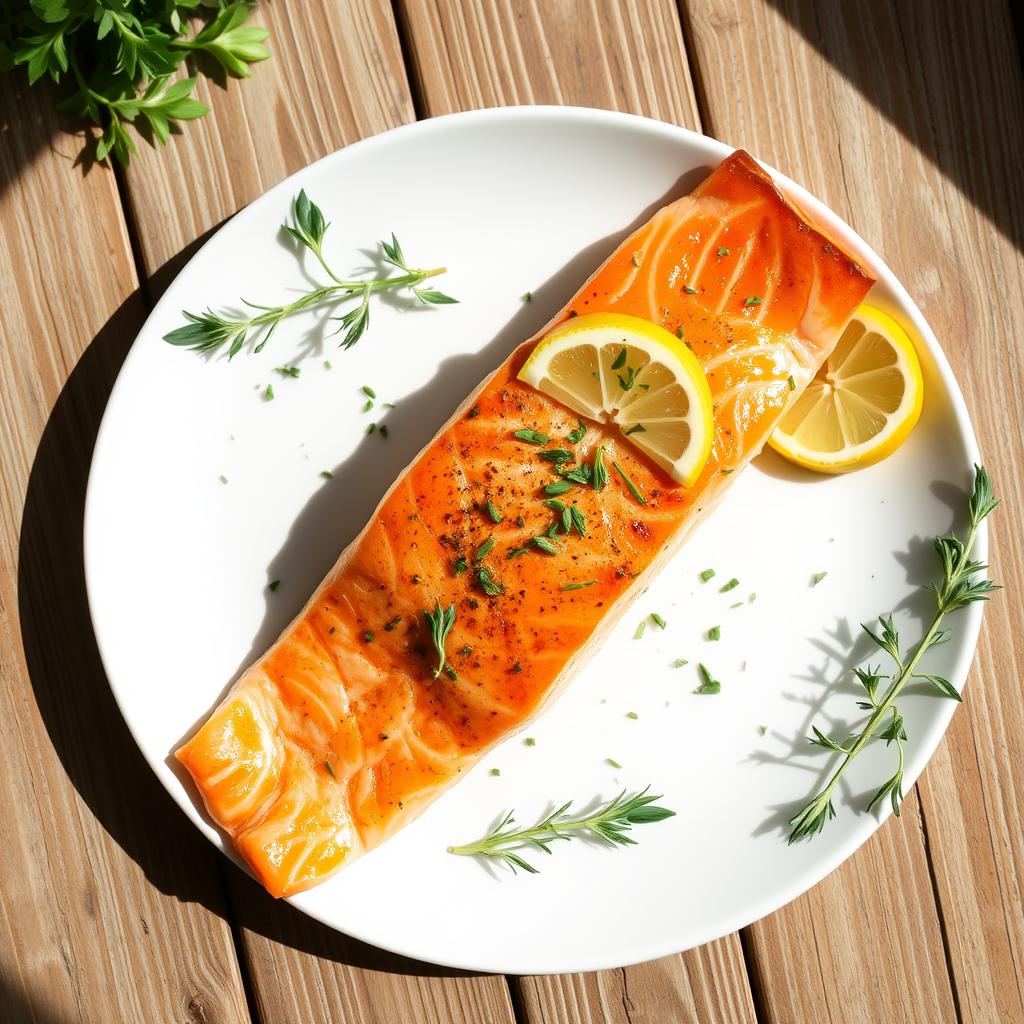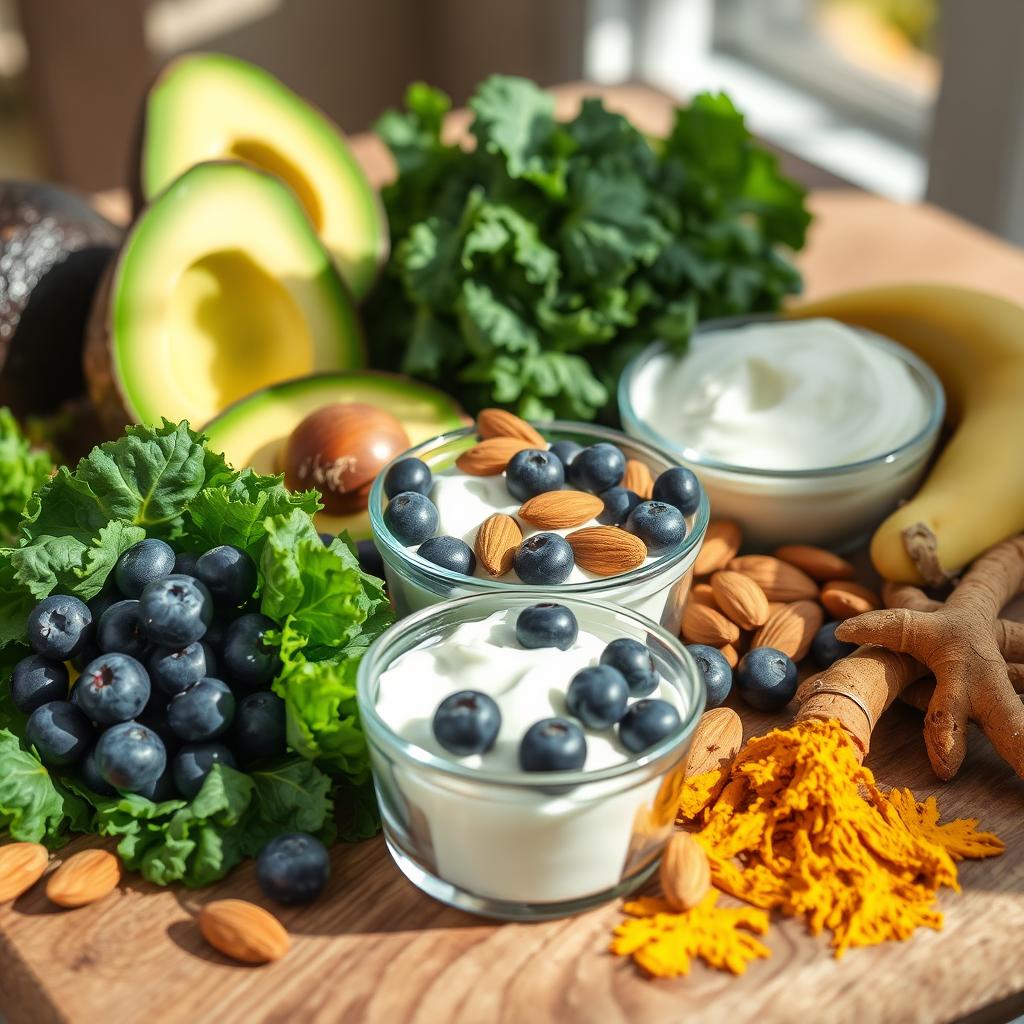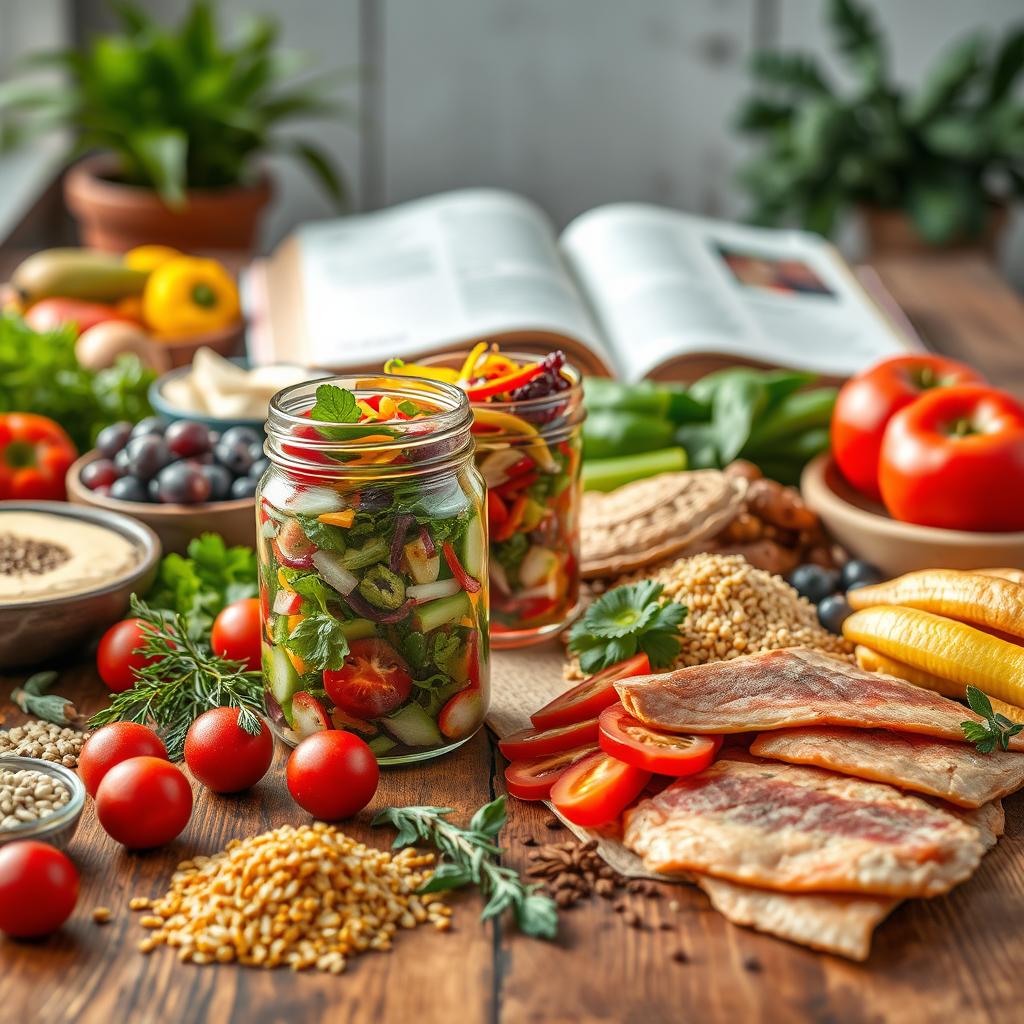When it comes to healthy eating, few foods rival the nutritional powerhouse that is salmon. Have you ever wondered why salmon is celebrated not just for its taste but also its impressive nutrient profile? Let’s explore what makes salmon a go-to choice for health-conscious food enthusiasts starting with its calorie content in a 100-gram fillet.
Why Is Salmon a Healthy Protein Source?
Salmon is packed with high-quality protein, which is essential for muscle maintenance and repair. In just 100 grams, salmon provides around 20–25 grams of protein, depending on the type. It’s also rich in heart-healthy omega-3 fatty acids that promote brain function and reduce inflammation. Plus, salmon earns bonus points for its abundance of essential micronutrients like potassium, selenium, and vitamin B12. Simply put, salmon offers a nutritional trifecta: protein, healthy fats, and vital vitamins and minerals all with minimal carbohydrates.
Quick Overview: Calories in Salmon Fillet per 100g
- Wild Salmon: Approximately 142–160 calories per 100 grams. Typically lower in fat but higher in protein.
- Farmed Salmon: Roughly 206–208 calories per 100 grams, with higher fat content compared to wild salmon.
- Atlantic Salmon: Falls within the same range as farmed salmon, featuring a well-balanced fat-to-protein ratio.
The caloric differences boil down to the salmon’s environment and diet. Whether you choose wild or farmed, salmon offers a nutritious and satisfying meal option.
Calories in Salmon Fillet 100g: A Detailed Look
Have you ever wondered how the cooking method impacts the caloric content of salmon? While salmon is renowned for its rich flavor and exceptional nutritional profile, a closer look at the calories reveals fascinating variations depending on how it’s prepared. Let’s break it down.
Raw Salmon: Caloric Baseline
Starting with raw salmon, 100 grams of wild Atlantic salmon contains approximately 142 calories, while its farmed counterpart comes in slightly higher at around 208 calories. This difference primarily stems from the higher fat content found in farmed salmon, making it a heartier option for those seeking additional energy.
Baked and Grilled Variations
Once you pop salmon in the oven or grill it, the caloric content shifts slightly due to water loss during cooking. Baked salmon tends to hover around 175–200 calories per 100 grams, depending on the oil or seasoning used. Grilled salmon, with its tantalizing char, exhibits a similar range, offering a lean yet satisfying option for backyard barbecues or quick weeknight dinners.
Smoked Salmon: A Unique Profile
For those partial to smoked salmon, the calorie count can climb slightly to about 200 calories per 100 grams, partly due to the curing process and added sodium. It pairs wonderfully with fresh greens or vibrant additions like a yellow bell pepper. Whether raw, baked, grilled, or smoked, salmon fillets fit seamlessly into a well-rounded diet. With its range of cooking options elevating its caloric values, there’s truly a version of salmon for everyone how will you enjoy yours today?
Macronutrient Breakdown of Salmon: Protein, Healthy Fats, and More
Salmon isn’t just a delicious choice for dinner it’s a powerhouse of essential nutrients, especially when it comes to its macronutrient profile. Whether you’re counting calories or simply curious about what’s on your plate, understanding what’s packed into 100 grams of salmon can inspire healthier meal decisions.
Protein: The Star Nutrient
Protein takes center stage in salmon’s nutritional lineup, making it a popular choice for athletes, fitness enthusiasts, and those looking to maintain a balanced diet. A 100-gram portion of salmon provides an impressive 20–25 grams of protein, depending on the variety. Wild salmon often edges out its farm-raised counterpart with marginally higher protein content, making it a go-to option for those prioritizing lean muscle-building nutrients. Rich in essential amino acids, salmon’s protein contributes to muscle repair, immune function, and countless other vital processes in the body.
Fat Breakdown: Healthy Fats and Omega-3s
Another standout feature of salmon is its fat composition, particularly the abundance of omega-3 fatty acids. Wild salmon contains slightly less fat overall compared to farmed varieties, but both types are excellent sources of the healthy fats your body craves. These omega-3s are known to support heart health, reduce inflammation, and even bolster brain function. In 100 grams of salmon, you’ll get approximately 5 to 13 grams of fat, with the farmed version typically on the higher end of the spectrum due to its diet and farming conditions.
Carbohydrates: A Non-Factor
If you’re wondering about carbs in salmon, the answer is simple there aren’t any! Salmon is virtually carb-free, making it a perfect food for those following low-carb diets or looking to stay keto-friendly. If carbs are still on your mind, you might want to explore other food options, such as carbs in corn, to get a more complete understanding of your nutritional needs.
From protein-packed goodness to the brain-boosting power of omega-3s, a salmon fillet offers incredible and balanced nutrition in just 100 grams. Whether wild or farmed, it’s clear why salmon continues to be a global favorite for health-conscious eaters.
Vitamins and Minerals in Salmon: A Nutrient Powerhouse
Did you know that a 100-gram serving of salmon is more than just a protein-packed option for your meals? It’s also loaded with essential vitamins and minerals that play pivotal roles in maintaining your health. Let’s dive into some of these standout nutrients found in salmon and why they matter for your overall well-being.
Key Vitamins in Salmon
- Vitamin D: Often called the sunshine vitamin, salmon is one of the best natural sources of vitamin D. This nutrient is crucial for maintaining bone health, supporting immune function, and regulating calcium absorption.
- Vitamin B12: Feeling fatigued or foggy? B12 could be the missing piece. Salmon provides a substantial amount of this vital vitamin, which supports red blood cell creation, nerve function, and DNA synthesis. A single portion can help you meet your daily requirements.
Essential Minerals to Savor
- Selenium: This trace mineral may not get the spotlight, but its antioxidant properties help protect cells from damage and support thyroid function. Salmon’s selenium content is like a shield for your body.
- Potassium: Move over bananas! Salmon is also a strong contender for potassium-rich foods. This mineral aids in muscle function, regulates fluid balance, and helps maintain healthy blood pressure levels.
Still wondering why these nutrients are so important? Think of them as the building blocks for your body’s daily operations. Whether it’s providing energy, repairing tissues, or keeping your immune defenses strong, the vitamins and minerals in salmon work tirelessly behind the scenes to keep you at your best.
So, the next time you enjoy a salmon fillet, remember: you’re not just savoring calories in salmon fillet or tasting its rich flavor you’re fueling your body with powerhouse nutrients.
Health Benefits of Salmon: Why It Deserves a Place on Your Plate
Salmon isn’t just delicious it’s a powerhouse of nutrition that can do wonders for your health. Whether you’re aiming to protect your heart, build muscle, or manage your weight, salmon can support your wellness journey in ways you may not have imagined. Let’s dive into why this nutrient-packed fish deserves your attention.

1. Heart Health Through Omega-3 Fatty Acids
Did you know that salmon is one of the richest sources of omega-3 fatty acids? These essential fats are like a gift to your heart, helping to reduce inflammation, lower triglycerides, and even improve blood vessel function. Wild varieties, such as Wild Atlantic salmon, usually boast higher omega-3 concentrations compared to farmed options. Including salmon in your diet may lower your risk of cardiovascular issues and promote overall heart health who doesn’t want that?
2. Protein Power for Muscle Growth and Recovery
For anyone pursuing fitness goals or simply looking to maintain lean muscle mass, protein is key. With calories in salmon fillet ranging from 142 to 208 per 100g, depending on the type, salmon delivers an impressive amount of high-quality protein that supports muscle repair and growth. Wild salmon, in particular, stands out for its higher protein density a win for those seeking a nutrient-dense option. After a workout or a long day, this versatile fish is exactly what your muscles need to bounce back.
3. Weight Management without Sacrificing Flavor
If you’re on a weight management journey, salmon provides a filling, nutritious option to keep your hunger in check. Thanks to its combination of lean protein and healthy fats, salmon helps you stay satiated, potentially curbing the urge to snack on less-healthy options. Plus, the variety in caloric content across salmon types means you can enjoy flexibility based on your dietary goals wild salmon for fewer calories, or farmed salmon for a slightly richer taste.
Whether you savor it grilled, baked, or raw, salmon’s unique nutrient profile makes it a must-include in your meal rotation. Have you tried pairing it with vibrant veggies and whole grains to create a balanced plate?
Comparing Salmon with Other Proteins
How does salmon stack up against other popular sources of protein like chicken, tuna, or beef? Let’s break it down. When choosing a protein for your meals, factors like calories, fat content, and micronutrients play a major role. Salmon, especially raw salmon fillet in 100g servings, offers a well-rounded nutritional profile that makes it stand out.
| Protein Source | Calories (per 100g) | Protein (g) | Fat (g) | Micronutrients |
|---|---|---|---|---|
| Raw Salmon Fillet (Wild) | 142 | 20-22 | 5-6 | Rich in Selenium, Potassium, Vitamin B12 |
| Chicken Breast | 165 | 31 | 3.6 | Moderate Potassium, Vitamin B6 |
| Tuna (Raw) | 130 | 29 | 0.6 | High Selenium and Niacin |
| Beef (Lean Ground, Raw) | 250 | 26 | 15 | Iron, Zinc, Vitamin B12 |
As you can see, raw salmon fillet provides a healthy balance of calories, protein, and fats, especially when compared to beef, which tends to come with higher calorie and fat counts. While chicken and tuna are leaner protein options, salmon triumphs when it comes to micronutrient density. Packed with Selenium, Potassium, and Vitamin B12, it supports essential functions like cell repair, immune health, and energy metabolism.
What about fat content? Salmon’s fats primarily include heart-healthy omega-3 fatty acids, making it a great option for brain health and reducing inflammation. Comparatively, beef’s fat content doesn’t offer the same health perks, and tuna’s almost negligible fat misses the benefits of omega-3 entirely. It’s easy to see why salmon strikes the perfect balance between nutrition, flavor, and versatility across meals.
Looking for a protein that provides more than just macros? Salmon delivers both the calories you need and the additional micronutrient boost that makes every bite a health-forward choice.
How to Add Salmon to Your Diet
Salmon is a culinary chameleon, effortlessly adapting to many meal prep styles while delivering a nutrient-packed punch. Whether you’re a busy professional or a health enthusiast planning your next plate, incorporating salmon into your weekly meals is simpler and more rewarding than you might think.
Meal Prep Ideas:
- Grilled Salmon Bowls: Pair a 100g grilled salmon fillet with steamed quinoa, roasted vegetables, and a drizzle of lemon-tahini dressing for a wholesome and energy-packed lunch.
- Baked Salmon Dinner: Season your fillet with garlic, dill, and olive oil, and bake it alongside sweet potatoes and asparagus for an easy tray bake bursting with flavor and nutrients.
- Salmon Salad: Toss flaky, cooked salmon chunks into mixed greens, avocado slices, cherry tomatoes, and sunflower seeds for a refreshing, protein-rich salad.
- Asian-Inspired Stir-Fry: Combine pan-seared salmon with stir-fried vegetables and teriyaki sauce, served over a bed of brown rice or noodles for a quick weeknight meal.
When it comes to how much salmon you should aim to eat, the recommended serving size is generally two to three 100g portions per week. This aligns with dietary guidelines promoting fatty fish consumption for optimal heart health, thanks to salmon’s omega-3 fatty acids.
Let’s be honest eating salmon regularly doesn’t just benefit your health; it’s a surefire way to elevate every meal. Plus, with its rich protein content and an average calorie count between 142 to 208 calories per 100g fillet, salmon strikes the perfect balance between indulgence and nutrition.
Ready to give your diet a boost? Start planning your meals and incorporate these ideas to make salmon the star of your plates this week!
Calories in Salmon Fillet 100g: How Does It Stack Up?
When it comes to balancing flavor, nutrition, and versatility, salmon stands out and its calorie count per 100 grams is just one of many reasons why. Did you know that the caloric content of salmon varies depending on the type and source? Here’s a quick breakdown:
- Wild salmon: Typically contains fewer calories, averaging around 142 calories per 100g. Ideal for those aiming to reduce calorie intake while enjoying a nutrient-rich meal.
- Farmed salmon: Slightly higher in calories, with counts reaching up to 208 calories per 100g, due to its higher fat content. However, it remains a great source of energy-packed healthy fats.
What makes salmon truly special, beyond its reasonable calorie range, is its nutritional density. A single 100-gram fillet serves up a powerful dose of lean protein, omega-3 fatty acids, potassium, selenium, and vitamin B12. Whether you’re building muscle, boosting brain function, or supporting heart health, salmon has you covered.
With its balanced macronutrients and minimal carbohydrates, salmon earns its reputation as a superfood and let’s be real, it tastes as good as it is good for you.






